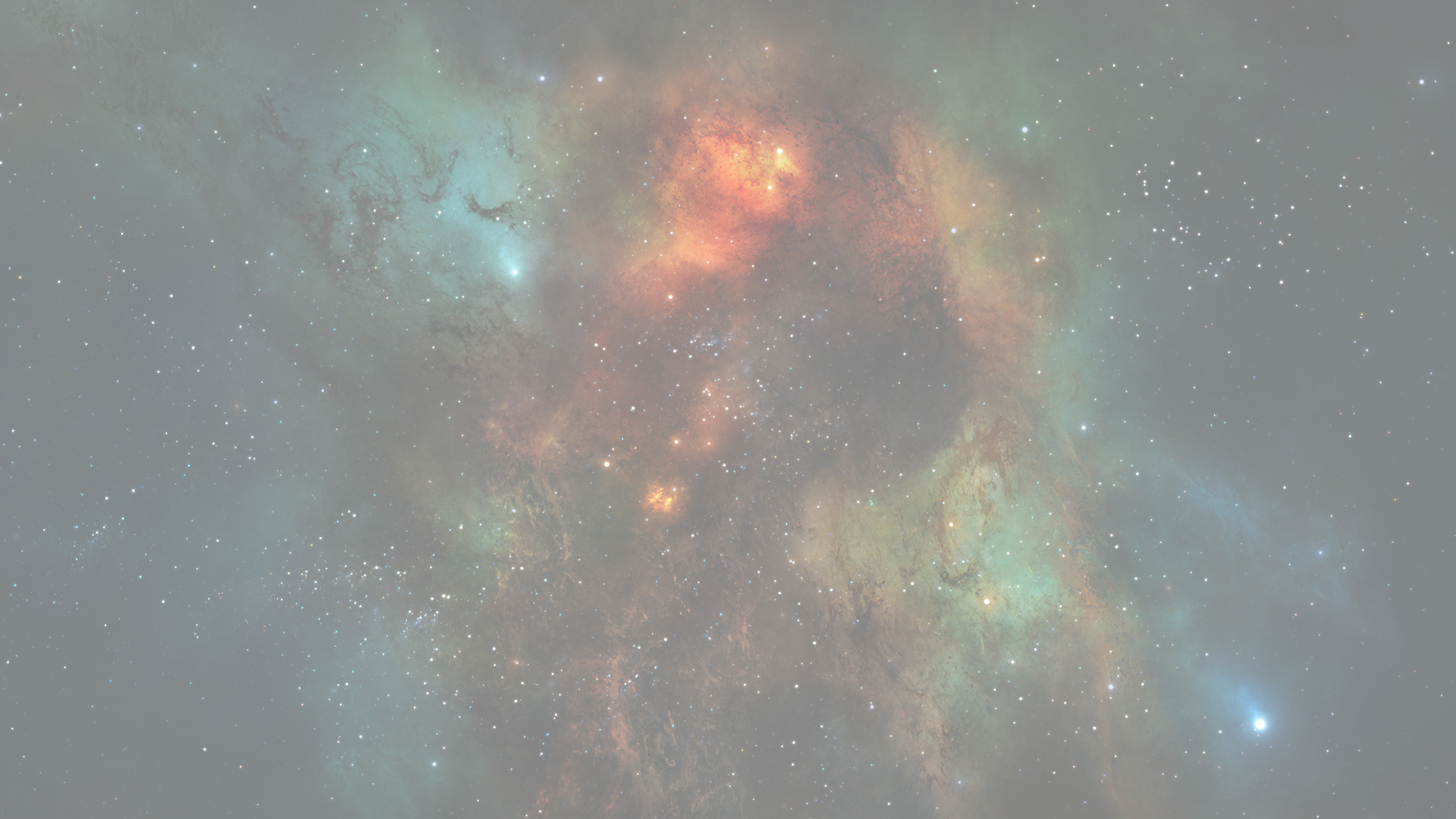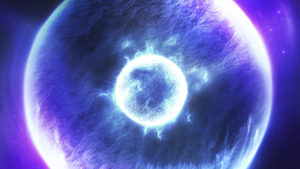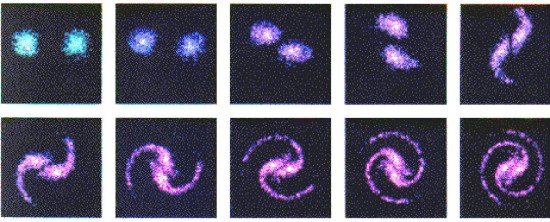
Supercomputer simulation of spiral galaxy formation by Anthony Peratt, based on charged particle interactions
Plasma Scientist Anthony Peratt Meets the Electric Universe
By David Talbott
Could a Single Pictograph Spark a Scientific Revolution?
The story of plasma scientist Tony Peratt and the personal cost of his involvement with the Electric Universe community deserves to be told simply and accurately. Though I can tell the story from a personal perspective, others might fill in important background and details.
The overriding message is the damage that a self-appointed Inquisitor, lacking any expertise on the subjects in question, can do to the exceptional career of someone who deserved MUCH better.
There is something profoundly unethical and disturbing in the story of colleagues standing by, watching the slanderous treatment of Tony from the sidelines and taking no initiatives to stop the baseless attacks that abruptly terminated his career. In particular, these attacks ended Tony’s systematic, rigorously scientific work to reconstruct earth-altering electrical events in the ancient sky. To hide or to deny this story is to violate every standard of integrity in the sciences.
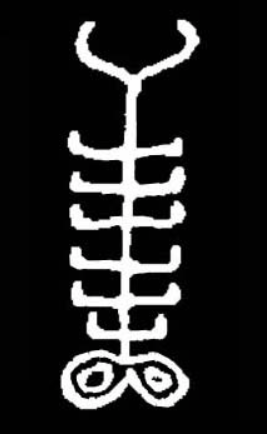
Kayenta pictograph
It happens that the pictograph from Kayenta, Arizona at the left was the first of many that I sent to Tony at his request. What sparked his interest was his realization that rock art images I’d gathered over many years depict plasma formations called “Peratt Instabilities,” once witnessed in the sky close to Earth.
For me the most stunning discovery was that the precise form depicted in the Kayenta rock carving belonged to a range of intense electric discharge configurations well documented in laboratory experiments at Los Alamos National Laboratory (LANL), and named by his colleagues after Tony himself. In our communications, Tony recognized immediately that the correspondence of the Kayenta pictograph to a violently evolving laboratory discharge form was far too precise to allow for an alternative explanation.
The Kayenta pictograph finds many variations in other lands, given such names as “the ladder of heaven” and the “backbone of the sky,” all associated with what I called a “phase of wandering” in the dismemberment of the former Polar Configuration to which I’d devoted much of my life reconstructing. But what celestial events might have caused a form of this sort to appear in the southern sky above human witnesses on earth? The pictograph’s origin was particularly sensitive because so much of LANL activity was classified under the laboratory’s nuclear weapons research. According to Tony himself, his first reaction on seeing the pictograph was to think that someone had hacked into his computer. If so, the most likely next occurrence would be the seizure and “scrubbing” of his computer—and possibly his arrest.
If, however, the Kayenta pictograph was indeed carved on stone in Arizona (and it was), Tony understood the implications quite well. It would immediately raise the possibility that near-earth electrical events in the past could explain enigmatic rock art images the world over—including images in his own “backyard” in the southwest. Such carvings on stone have puzzled archaeologists for centuries.
And so Tony began an intensive investigation of global rock art spanning several years. His results, including the Kayenta pictograph and other images I had sent to him, were featured in a series of groundbreaking articles, several co-authored with our own Thunderbolts colleagues, retired professor of electrical engineering Donald Scott and the accomplished researcher and linguist, M.A. (Rens) Van der Sluijs.
http://plasmauniverse.info/NearEarth.html
I personally met with Tony on several occasions, in Portland, Phoenix, and Albuquerque, while these articles were in preparation. His inspiration was infectious, and no one meeting him had any doubt that his work would challenge fundamental assumptions in the sciences. In particular, Tony’s findings would categorically preclude the “uniformity principle” that has constrained scientific investigation for far too long. Even today, most of the theoretical sciences simply ASSUME that events occurring in our own time are the key to understanding the more ancient past: “As today so before.” But with any appreciation of the extraordinary natural events in more ancient times, the uniformity principle is the first ideological tenet to go out the window.
The truth is that today’s uneventful sky offers no analogy for the profound spectacles in in the skies above our early forebears. Earth-shaking electrical activity, recorded on stone around the world and recounted in archetypal myths and symbols, provoked a collective response from ancient people as if their lives depended on it. In fact the lives of millions of people DID depend on their response to these events, since (as Peratt himself acknowledged) the synchrotron radiation would have most likely been deadly. Humans survived by retreating to caves, and in many instances artists in the open would have died without the shielding provided by neighboring cliffs.
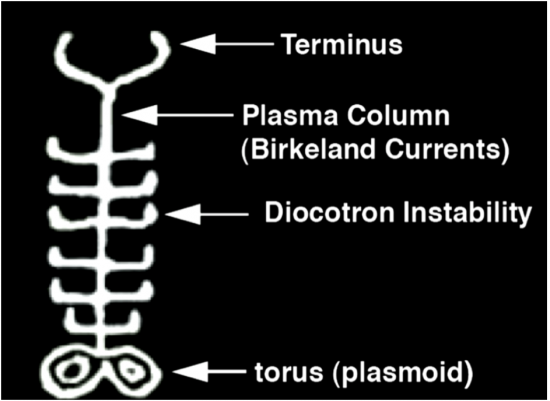
Tony Peratt’s explanation of the Kayenta pictograph
The details of this story include a relentless personal campaign by one individual in particular to shut Tony down. These details will be given in future Thunderblogs. Therefore, your help in directing attention of others to this story could well affect the future of critical investigation in the sciences.
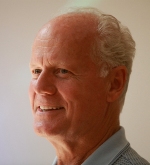 David Talbott is the founder and director of The Thunderbolts Project. His book The Saturn Myth (1980) helped to inspire the work of several others now joined in this collaborative project. In 1996 his work was the subject of a documentary Remembering the End of the World by Canadian filmmaker Ben Ged Low. He is the co-author with Australian physicist Wallace Thornhill of two books, Thunderbolts of the Gods and The Electric Universe. Three episodes of his full-length documentary series Symbols of an Alien Sky have been among the most popular video presentations on the Thunderbolts Project YouTube Channel. He is currently posting the Discourses on an Alien Sky series.
David Talbott is the founder and director of The Thunderbolts Project. His book The Saturn Myth (1980) helped to inspire the work of several others now joined in this collaborative project. In 1996 his work was the subject of a documentary Remembering the End of the World by Canadian filmmaker Ben Ged Low. He is the co-author with Australian physicist Wallace Thornhill of two books, Thunderbolts of the Gods and The Electric Universe. Three episodes of his full-length documentary series Symbols of an Alien Sky have been among the most popular video presentations on the Thunderbolts Project YouTube Channel. He is currently posting the Discourses on an Alien Sky series.
